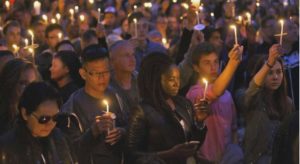 Candlelight vigils will be held in numerous cities in wake of the terrorist attack at a Quebec mosque.
Candlelight vigils will be held in numerous cities in wake of the terrorist attack at a Quebec mosque.
As Theodore Dalrymple put it about a prior attack:
A moment used to be defined as the amount of time between a Mexico City traffic light turning green and the sound of the first car horn, but now it might be defined as the period between a terrorist attack in a Western city and the first public appearance of a candle. Every terrorist attack, including the latest one in Berlin, is immediately followed by the public exhibition of lighted candles. It is almost as if the population keeps a store of them ready to hand for this very purpose.
[…..]
The candles, then, are a manifestation of modern paganism, a striving for transcendence without any real belief in it. They are also a somewhat self-congratulatory symbol of our own peaceable temperament: the violent are not great candle-lighters. We cannot, for example, imagine Genghis Khan lighting many candles for the souls of the departed (not that we really believe in souls).
I think Dalrymple is correct when he says the candles signify a striving for transcendence without any real belief in it. It is only fitting, then, that Anglican bishops and lesser clergy will be well represented in Quebec, London (Ontario), Halifax, Edmonton, Toronto, Hamilton and, no doubt, many other locations.

